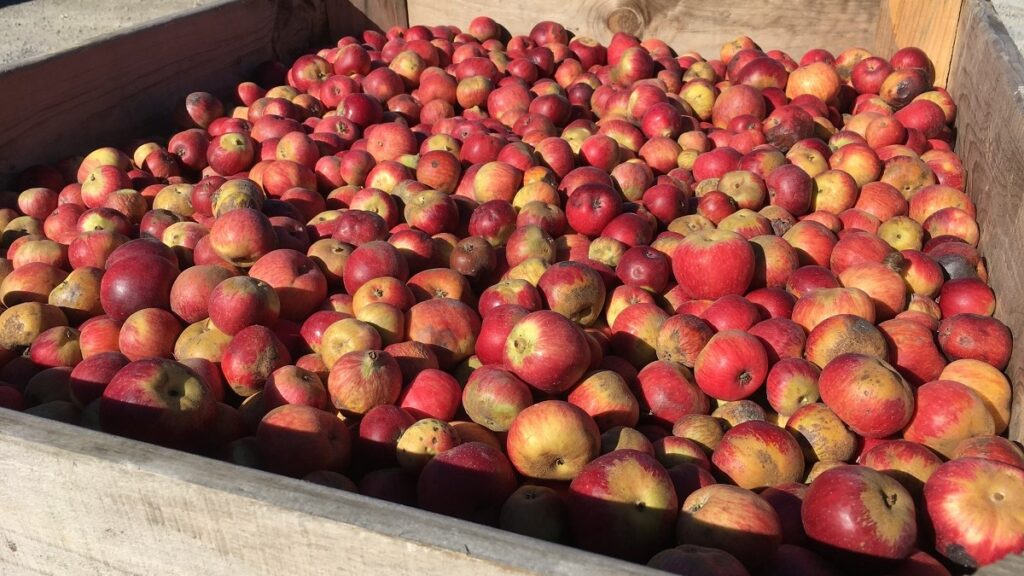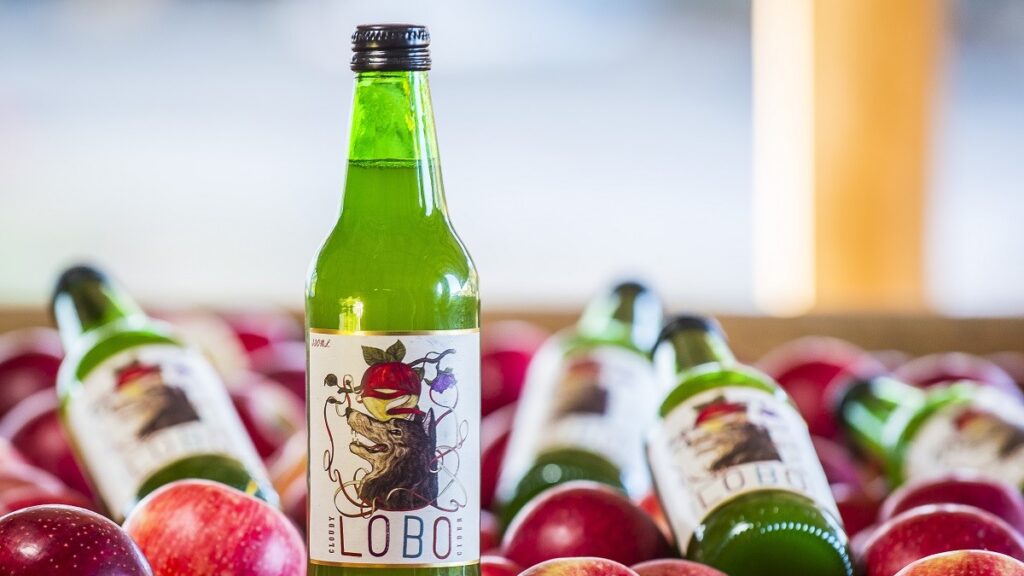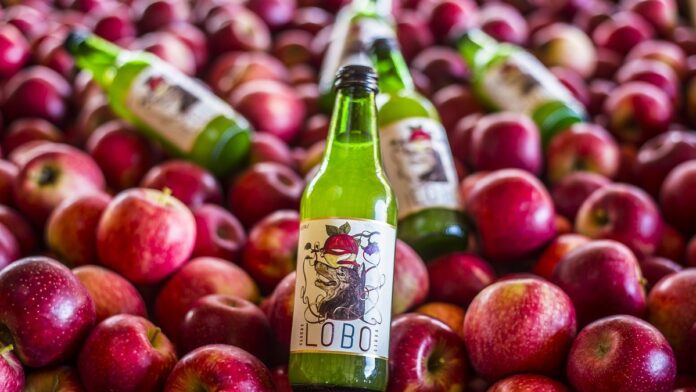Who doesn’t love a crisp apple cider? Well, a lot of people may have never tried cider, because it’s not the first thing that comes to mind when you’re looking for an after-work pint or a pick me up on a lazy Sunday afternoon. That doesn’t mean it isn’t an amazing drink though.
READ MORE: We talk all craft brews and more with Adrian Sim from East Asia Beverages

At Travel Wanderlust, our goal is to introduce the different alcohols from around the world to everyone. To find out more about cider, we spoke to cider maker Warwick Billings, who is the President of Cider Australia and co-owner of LOBO Cider in the Adelaide Hills of South Australia. Originally from Somerset, the cider capital of the UK, Warwick has been involved in making the beverage since he was just eight years old.
Warwick’s interview was condensed and edited for clarity.
What is cider?
Cider is the drink produced from fermented apple juice, and sometimes pear juice. Fresh fruit is crushed, pressed, and the resulting juice is fermented, matured, bottled and drunk. The process is similar to making wine and just as grapes make wine, apples make cider.
The drink has been made and drunk for thousands of years, in places where apples are grown such as the UK and across Europe. The history of it in Australia traces back to the 19th century when early European settlers planted apple trees and started making cider, as they had done back home. It’s been in the last 10-15 years that the industry has really boomed with many new brands emerging. Some are from wine and beer producers, but most are start-up cider companies and apple growers looking to diversify.
Cider can be incredibly diverse and distinctive in its taste, just like (grape) wine. The taste of a cider depends on the varieties of fruit used and the way it is produced. Apples grown for eating, the types you find in shops such as Pink Lady or Fuji or Granny Smith, are often used to make cider in Australia due to their widespread availability. Eating apples tend to produce clean, crisp, light-coloured ciders in what we call a modern, or New World style.
At the other end of the spectrum you have cider apples which are often used to make what we call Traditional styles of cider. These apples are grown specifically to make cider, because of their tannins and tart acidity. You would not want to eat these apples, but they can make some incredible cider that is tangy, full-bodied, and full of character.
The UK, France, Spain and Germany are the ancestral homes of these varieties, which evolved over long histories of making cider. In Australia, cider apples are still a niche crop and can be hard to come by. Coming from the UK, I am convinced that cider apples are the next frontier for Australian cider, although we should not forget that the globally successful apple varieties Granny Smith and Pink Lady were both bred here in Australia and can make pretty good ciders too.
Is cider really a beer made from fruit?
NO, No, no, no! Sure a lot of people think of cider like that, but it is much closer to wine in the making and can be in the drinking. It is one of the cider’s perception problems, people see it as apple beer because it often comes out of a keg, or a 330ml bottle. Going forward we will see more and more ciders being made with greater complexity, depth of flavour, and general interest, and turning up in sparking 750mL and wine bottles.
In the UK there is quite a big campaign based around the slogan “cider is wine” to get people to try pairing cider with foods in parallel with wine. Think back to the fact that the first Chardonnay grapes pretty much arrived in Australia in the late 70’s or early 80’s and look where that has got to. Cider as a more sophisticated drink is only just beginning but watch this space.
Apples and pears contain all the components needed to make a cider. Same as grapes. Squash them and ferment the juice. Beer starts out as barley, which is malted to release the sugars and then boiled with hops and other components added. A big cider made from high-tannin fruit can give you a similar feel in your mouth as a big, bold, red wine.
How strong are ciders in general?

They typically range from 4-9% ABV, which is slightly higher than your standard beer and quite a lot less than many wines. So cider is often drunk as a long drink – which is another similarity to beer. When made with cider apples, it can end up stronger than this in alcohol content, and it will also pack more of a punch in taste, just as some sweeter ciders may contain less alcohol.
As consumers search for lower strength drink options, cider producers are also experimenting with production methods to make low- or no-alcohol ciders that taste like full strength ciders. They do this by stopping fermentation early, or by removing alcohol after fermentation.
With many new lower strength products being made, this year Cider Australia is opening its annual cider show, the Australian Cider Awards, to products that contain little or no alcohol. It will be interesting to see how the judges perceive the success of cider makers in achieving a great cider taste without the alcohol that usually accompanies it.
What food can you pair cider with?
This probably won’t surprise you, but I haven’t found any food I couldn’t pair with it. The main thing is to get out there and try it, mix it up and see what works. Just like any other drink not everything will be perfect, but please experiment and you’ll be pleasantly surprised. Cider can take you right through a meal from starters to seafood or hearty meat dishes, desserts, and cheeses.
New World ciders that have some, but not too much sweetness, are great served with bold, fresh summery foods such as salads and grilled seafood and meat. These styles are lighter and will not overpower the food, and the sweetness and acid will actually enhance the taste of the food.
One that is traditional in style with a darker colour, rich, earthy flavour and some bitterness will marry well with robust, savoury foods. Roast pork with apple sauce, other meats with creamy sauces, and intense cheeses work well, with the cider able to cut through the richness of the food. It is all about balance.
I am also a big believer in using it in cooking. Add it to your salad dressings, marinades, stocks, and sauces, as you would a white or red wine. Cider is a natural complement to pork and apple desserts with rich custard, but do not limit yourself as there are so many great cider and food matches.
What do you recommend someone new to cider should try?
A good place to start is an apple cider that is medium to sweet and modern in style. Broadly speaking this cider should be lively and fruity with the smell and taste of fresh apples.
If it’s too sweet, try a bit drier, but balance tends to be the secret.

If you’re keen to leap in and try a more complex one, I’d suggest sitting down with a nice plate of cheese and a medium to dry traditional cider. I often taste ciders with people at farmers markets, and it’s fascinating learning how different people have such a range of preferences.
Often the wine drinkers can jump straight into dry and complex ciders, but everyone has their personal range. It changes with food too, it is fun to taste some of the drier more complex ciders and then eat a piece of cheese and taste the same cider again, for lots of people it changes dramatically. Do not be afraid to try new ones, find some that you like and join the dots and figure out the style that works for you.
It isn’t as developed as the wine industry when it comes to understanding and describing styles, and this is something cider producers are working on. I’d recommend reading the full description on labels, and don’t be shy about asking for advice. A good starting point is to ask about the apples used, and the sweetness of the cider.
Is there a specific way or style that you recommend that people should try cider?
Trying cider at a local cidery, or from a local producer is an excellent way to start. If you can get closer to the source you will encounter a lot of enthusiasm to help you understand ciders. Some people can be almost fanatical. The cider maker or staff will be able to talk you through the product and give you an idea where it sits on the cider spectrum in terms of sweetness and if it’s a modern or traditional style, so you can find your favourite styles and most importantly, know what to ask for in the future.
As I suggested above, it is always a good idea to sample ciders with food. The same one with different foods, and different ciders with the same food. Think about how you serve the beverage; the temperature, whether you mix up or ‘rouse’ cloudy version before pouring it, the mix of fruit and how the alcohol content affects the taste. It’s an interesting drink that warrants a lot of repeat investigation.
Are there any ‘no-nos’ when it comes to drinking cider?
Cider makers are pragmatic when it comes to cider, and I can’t think of any hard and fast rules. In Australia we tend to serve most ciders chilled to some extent, either straight from the fridge or left out for a while to allow more flavours to show when being consumed.
Personally, I like the drier more traditional ciders a bit warmer. But that said a cold cider over ice after work can be a very beautiful thing. Cider makers are getting creative with cider in cocktails, so again watch this space, they work well, but are still a bit unexplored by the mixologists.
What is your favourite cider?

Such a tough question, it is a bit like the “which is your favourite child?”. Even amongst LOBO ciders, it does so depend on mood, the company, and the occasion. My favourite now is LOBO Norma, but we have a new contender that is going to hit the market in August called Lenswulf, quite a tannic cider apple cider; almost like Pinot Noir in structure. I’ve been testing/tasting a few of these just lately and it keeps getting better and better with a little bottle age. LOBO Cloudy on a warm evening is a sensational drink.
On international stars, Tom Oliver from Herefordshire in the UK makes some pretty good drops. We recently imported some to sell to enthusiasts. I had an amazing “method traditional” Spanish cider a few months ago, given to me before COVID-19 by a visiting Spanish friend.
I will probably never get to drink it again, but it was terrific with clear, crisp well defined bright fruit, but with tannin to make it quite serious.
This is part of our new series to introduce different types of alcohols that may be popular in different parts of the world, but not are not as common or widely consumed in others. These are opinions from experts in their field and are not necessarily shared by the team at Travel Wanderlust.
If you would like to be featured in this section, drop us a message here.


[…] MORE: We talk all things cider with Warwick Billings from Cider […]